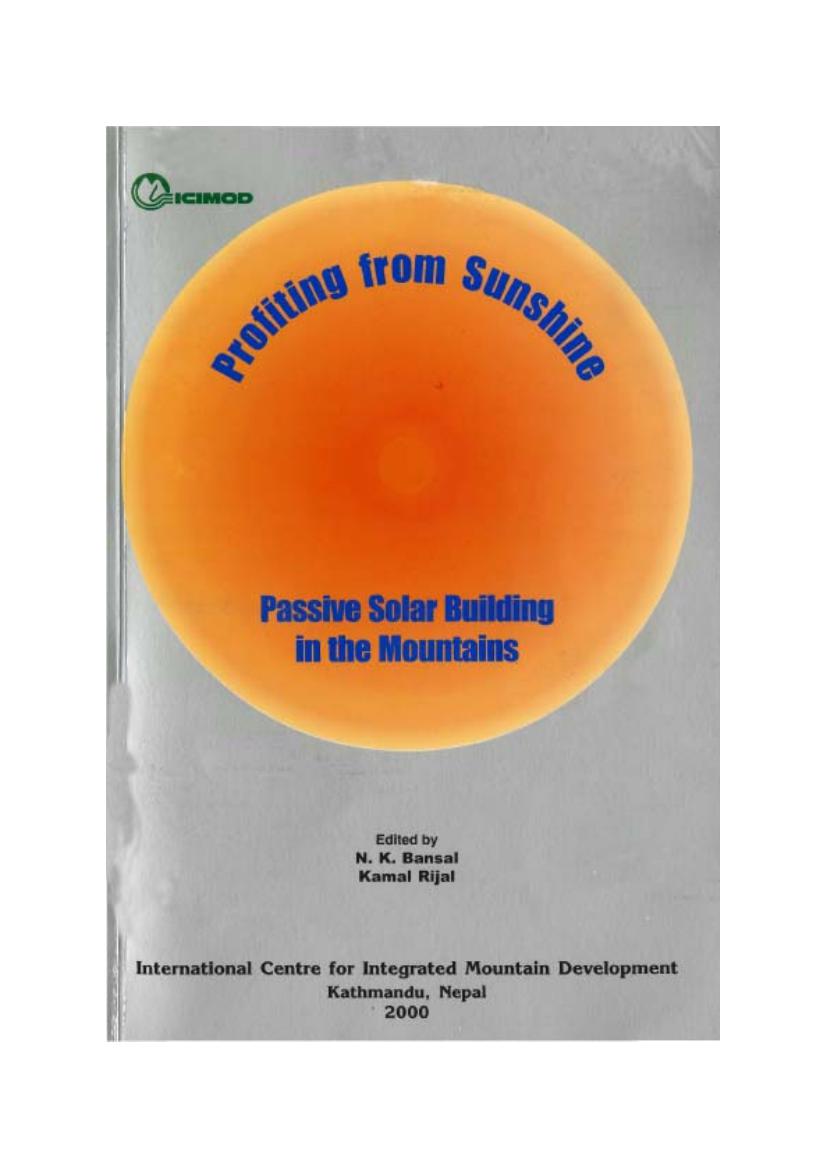
In the Hindu Kush-Himalayan (HKH) Region it is difficult to keep houses warm during winter. Usually biomass fuels are burned for cooking and space heating. Using biomass fuels has resulted in large-scale deforestation and ill effects on the health of mountain people, especially women and children, from the smoke produced. Solar radiation is available in most parts, and it is sensible to take solar energy consciously into consideration in designing buildings in order to reduce the use of biomass fuels for space heating. The International Centre for Integrated Mountain Development (ICIMOD) is committed to improving the living standards of people living in the HKH Region. In the light of this objective, the Centre organised workshops on Passive Solar Building Technologies in China, India, Nepal, and Pakistan to establish a network of institutions involved in promoting Passive Solar Building Technology (PSBT) in mountain areas. The state-of-the art reviews clearly indicated that concrete efforts had been made in China and India to promote a solar passive heating programme, whereas there have been individual efforts in Nepal and Pakistan to build passive solar homes. The compilation of these papers in a comprehensive and concise manner should help to share knowledge about new developments in the respective countries as a means of promoting PSBTs in mountain areas. This book, the first of its kind, provides an overview of the (i) National Workshops; (ii) Potentials for Application of PSBTs in Mountain Areas; (iii) Fundamentals of Solar Energy and Solar Radiation; (iv) State of the Art in Solar Passive Technologies; (v) Solar Passive Building Designs in the Mountains; (vi) Building Materials for Hilly and Mountain Areas; (vii) Application and Design of Passive Solar Systems for Buildings; and (viii) Issues and Future Directions required for the promotion of PSBTs in mountain areas of the Hindu Kush-Himalayan Region. Overall, concrete solutions are needed to introduce solar passive building concepts in the HKH Region. Understanding climate, traditional architecture, construction materials, and construction techniques is important for optimum passive building designs, and this book attempts to provide some insights. The following activities are recommended: (i) analysis and classification of climatic conditions in the HKH Region; (ii) study of vernacular architecture and identification of passive building elements; (iii) study of urban architecture; (iv) selection of an appropriate thermal simulation programme; (v) creation of a database and thermophysical properties of building materials and traditional building components; (vi) quantification of individual design patterns, for example, direct gain, indirect gain, thermal storage, solarium, cavity insulation, building form, roof shape, and underground structure; and (vii) preparation of manuals on design guidelines, design context, and construction issues. The information and knowledge thus prepared should then be disseminated to architects, users, and the construction industry, in both the formal and informal sectors. Design guidelines have not been provided for rural mountain areas anywhere in the world. Any initiative in this respect would help improve the health, efficiency, and lifestyles of rural people residing in mountain areas.